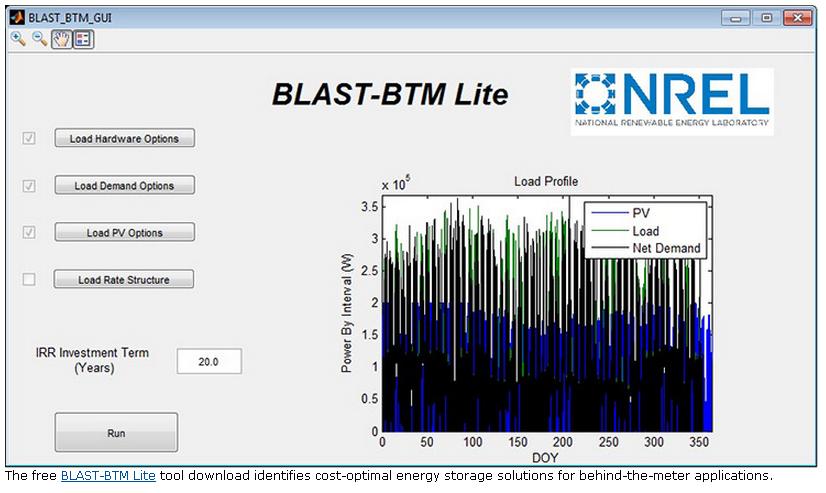Editor’s note: Those designing power-storage facilities may find value in this software from NREL.
While upfront costs of lithium-ion batteries must be significantly cut for electric vehicles (EVs) to reach a wider audience, lifespan optimization and synergistic business approaches offer additional ways to make EVs more affordable. NREL’s new Battery Lifetime Analysis and Simulation Tool (BLAST) suite makes it possible to predict long-term performance of batteries in a wide range of business strategy, use, and infrastructure scenarios—including fast charging, wireless charging, and battery swapping—and identify possible improvements. It has also been paired with NREL’s Battery Ownership Model (BOM) to evaluate lifetime battery costs in conjunction with performance, longevity, and new value propositions.

NREL’s Battery Lifetime Analysis and Simulation Tool (BLAST) suite answers questions with a combination of advanced models of batteries, the systems they operate in, and their interaction with users and the environment.
Lithium-ion (Li-on) batteries used in EVs and stationary energy storage applications must be optimized to justify their high upfront costs. Given that batteries degrade with use and storage, strategies for optimization must factor in many years of use with a number of variables that include temperature, state-of-charge histories, electricity current levels, along with cycle depth and frequency.
These factors can all affect rates of battery degradation, making it important to model both the battery and its application in detail to accurately predict longevity. NREL’s Battery Lifetime Analysis and Simulation Tool (BLAST) suite answers this need by using a combination of advanced models of batteries, the systems they operate in, and their interaction with users and the environment. This enables highly realistic technical comparisons of different battery-use strategies to predict long-term performance in electric vehicles and stationary energy storage applications.
NREL
http://www.nrel.gov/transportation/energystorage/blast.html
Filed Under: Energy storage, News




